 BAKER CITY, Oregon, March 31, 2017 (LifeSiteNews) – Matt and Elsa Cunningham thought they’d lost their young son in a drowning accident earlier this month. But 22-month-old Matty made it through the terrible ordeal with no medical complications.
BAKER CITY, Oregon, March 31, 2017 (LifeSiteNews) – Matt and Elsa Cunningham thought they’d lost their young son in a drowning accident earlier this month. But 22-month-old Matty made it through the terrible ordeal with no medical complications.
The toddler should not have survived. His case has defied the laws of nature and science. And the Oregon family wants to share the joy of their miraculous experience, which they attribute to the power of prayer.
“Our Catholic faith is at the center of our lives,” Matt Cunningham told LifeSiteNews. “But I never knew that we’d be blessed this richly. It’s more than we could have ever asked for.”
Elsa expressed confidence that her son’s survival is due to a miracle, and how his very presence every day is an even greater testament to the miracle of life than it was before.
“Because you know when you wake up and he’s alive,” she told LifeSiteNews.
It couldn’t happen without God
Many human hands helped to save Matty, and the Cunninghams are grateful to them.
But it was also a stream of apparent Divine Interventions that led to Matty’s survival.
They are grateful to God, to the venerable Archbishop Fulton Sheen and St. Joseph, Matt’s late mother and the Blessed Virgin Mary.
The couple prayed to God and His saints throughout Matty’s plight, but especially upon the horror of finding him in the water. And it was Archbishop Sheen, the revered pioneer of modern evangelization, that Matt thought to turn to at that moment.
“Archbishop Sheen was the one I screamed to,” Matt recounted in describing the 911 call, which was a mingling of his cries to Heaven to save his son and communicating with EMS.
The family had been praying a morning devotional with Archbishop Sheen each day in the month leading up to the accident. They were enamored of the prospective saint’s teaching. He has stood out among those they invoked to intercede on Matty’s behalf, and they think he had a hand in Matty’s survival.
“The Church is our life,” said Elsa. “If we could give credit to one saint, it would be Archbishop Sheen, but there were so many.”
“The crazy part is, Matty was dead, and now he’s perfect.”
Without knowing whether their situation would ever qualify for a miracle, the Cunninghams nevertheless now feel an affinity with the family whose child is at the center of the first approved miracle in the cause for Archbishop Sheen’s canonization. The stillborn baby was resuscitated after medical professionals worked on him for just over an hour.
“I feel for those parents who waited for 61 minutes for their child to come back,” Elsa said.
What happened that day
Thursday, March 9, was a mild late winter day that found the Cunninghams anticipating spring and working in the yard of their home seven miles from Baker City.
The homeschooling family had recently seen the first bluebird of the season, so Elsa was cleaning out a birdhouse for the birds to nest. The family had a litter of a couple-months-old puppies, and Matt was building an extension to their dog kennel.
Their oldest, Johnathan, 17, was inside working on school. Shane, 14, was not at home. The rest of the kids, Daniel, 11, Isabel, 9, and Abigail, 7, were outside helping their parents, along with Matty.
They don’t know when, but Matty wandered away on his own. They think he may have been following one of the puppies and fell into the pond about 100 yards from where they were working.
A string of miracles begins
But the pond is on a neighbor’s property behind a tightly spaced barbed wire fence that Matty shouldn’t have been able to get through. So it didn’t dawn on them at first to even check the pond, but as they realized he was missing, something took them there.
“The Holy Spirit led us, we believe,” Matt said.
The first miracle was not just that they were led to him, he said, but also that Matty was floating on the surface instead of sinking, despite his being dressed in a heavy winter coat and boots.
Elsa went through the barbed wire fence, tearing her clothes, and Matt went over the top.
“Whatever we had to do,” Matt told LifeSiteNews. “Elsa dove in with all her clothes on. Every second counted.”
Elsa started chest compressions and Matt performed mouth-to-mouth resuscitation.
A parent’s worst nightmare
No one knows how long he’d been in the water, but they thought for sure they’d lost him.
Matty was blue, unresponsive, not breathing.
“We thought he was dead,” Matt said. “There was no movement in his limbs. He looked like he’d been there all winter.”
“Every parent knows the terror we felt,” he said. “It was pure hell.”
Still, Matt said they would try to resuscitate him “until they pried him away from us.”
Matt screamed to the 911 dispatcher on the phone as they also cried out to God. The other children immediately fell on their knees and prayed, Cunningham told LifeSiteNews, and John called 911 too.
Archbishop Sheen was on the tip of Matt’s tongue when it came time to beseech God to save Matty. He can be heard invoking him on the 911 tape.
He is grateful for the family’s daily devotional to the venerable prelate.
“I believe that was the Lord’s way of preparing us for that morning,” said Matt.
He remembers jumping out of the way as soon as the EMTs touched his shoulder, knowing they needed to work.
They detected a faint heartbeat at the scene, but Matty was still not breathing.
A friend jumps to action
Local sheriff Travis Ash, a family friend, had arrived on the scene apart from EMS, having also heard the call.
Ash instinctively ran to the ambulance, ahead of everyone else running, and jumped in to drive. Matt Cunningham doesn’t know why, but it’s another thing he considers the foundation of a miracle.
Ash was compelled to action, taking the driver’s seat, and driving such that the EMTs told him to take it easy. Ash continued at top speed, and the ambulance made it across the nearby railroad tracks in time to avoid a train that would have cost them valuable time.
“His haste gave Matty precious moments of needed care in the hospital,” Matt said. “It was all hands on deck, something that restores your faith in humanity.”
When Matty got to the ER at St. Alphonsus Medical Center in Baker City, an estimated 17 minutes after the first 911 call was placed, his body temperature was 84 degrees.
Matty’s initial blood work was that of a dead baby in Baker City, Matt told LifeSiteNews.
The staff had to administer two bone IVs in his calves because he was too cold to get a regular IV started. They performed blood work and other tests to assess his condition, the implication being there would be permanent damage assuming Matty survived.
They intubated Matty with a mobile ventilator and tried to warm him.
As the staff worked, Elsa prayed quietly to herself, Matt said, “I just spent most of the time on my knees.”
During this time, he had an experience that convinced him that Bishop Sheen was interceding on their behalf for Matty.
As he prayed, Matty cried out every so often while the hospital staff tried to revive him.
“Every time I kept imploring Archbishop Sheen, those were the two or three times I heard him cry,” Matt said.
He’d been told it was likely just a physical reaction his son had been making. The sound had him alternating between hope and fear.
People that they knew, and many they didn’t, stood in prayer in the parking lot, Matt recalled.
Everyone who was either at the scene or in that hospital knew how hopeless and tragic the situation was, he said, “how it was sure to end later that day with the planning of our son’s funeral.”
Matty was then airlifted the 125 miles to St. Alphonsus Regional Medical Center in Boise and would later be transferred to St. Luke’s Children’s Hospital, also in Boise.
A mother’s plea to God
Elsa rode in the helicopter as Matty was life-flighted to Boise. Matt followed by car with a family friend.
“I had the 50-minute helicopter ride from hell,” she told LifeSiteNews.
It was raining, there was turbulence, and she needed an airsickness bag handy nearby.
“But I’m just praying,” Elsa said, praying that God will allow her to keep her son.
Elsa, like many women, has miscarried, in her case three times.
Naming one of her other babies, she told LifeSiteNews that she thought as she prayed, “He has Michael (and the others).”
She prayed to God in the helicopter, “I want this one. I don’t know if we can live through this” (losing Matty).
Another sort of miracle Matt described was when they raced past a highway patrolman on the normally two-plus-hour drive to Boise, the officer simply waved at them, despite their speed.
Care, with prayer
Then, the experience with first doctor they encountered out of the helicopter at St. Alphonsus, Dr. Adrian John Curnow, also seemed in line with their impending miracle.
Curnow was willing to pray for their son.
“He grabbed me by the shoulder and told me, “God loves your son more than you do, and he’s going to be OK,” said Matt.
Curnow wasn’t the only medical professional to pray.
“All along the way, person after person and physician after physician prayed with us, and over our son,” Matt said. “This doesn’t happen in a secular world, but again, God allows small miracles to form the foundation of one large miracle.”
The doctor explained to the Cunninghams how Matty’s temperature would come up and then could spike, which would be dangerous.
He had a line put in through Matty’s nose to the boy’s stomach, and with a large syringe, taking water in and out of the line, he moderated Matty’s core temperature.
Curnow then rode in the ambulance with the Cunninghams to St. Luke’s, continuing the water-cooling procedure and staying with them after they arrived at the new hospital.
Matty remained heavily sedated there, until he could have an MRI to determine damage from the accident.
As the family waited the few days for Matty’s MRI, fellow parishioners at the Cunninghams’ parish of St. Francis de Sales Cathedral in Baker City and many others prayed.
Their doctor at St. Luke’s was another beacon of faith, Matt told LifeSiteNews.
Between his manner, praying and using scripture with them, Dr. Derrick Dauplaise really embodied Christ to them, Matt said. He always came to them in a reassuring way, no matter what.
“He laid hands on Matty and prayed,” Matt recalled. “He then said God was going to take care of all of us.”
“He was the doctor to us just as much as Matty,” he said. “He was so loving, this man, we could just tell God was with us.”
An outcome with no medical explanation
The MRI took longer than expected, and likewise, the wait for results was difficult. The staff was taken aback by what they found. They wanted to be sure before they brought the Cunninghams the news.
Matty’s MRI results were absolutely normal, defying medical explanation.
When the Cunninghams were told there was no sign of brain damage, despite the specifics of Matty’s case, they couldn’t believe it.
“We just wept,” said Matt, “and I just fell on my knees and prayed to God. Thank you God, Archbishop Sheen and all the saints and angels.”
Prayer had been the key, prayer in the face of fear, and faith in God’s plan, no matter what, where or when.
At one point in the middle of the night during Matty’s hospital stay, Matt said, he wanted to pray the rosary, but he’d forgotten his rosary at home in the rush for the hospital.
So in the quiet of the night in Matty’s room, Matt used his son’s 10 toes in place of the 10 Hail Mary rosary beads to pray for the Blessed Mother’s intercession for his son.
“So I used his toes,” he said. “I just thought it was a great thing to do.”
After the MRI, things went quickly. Matty’s sedation was stopped and his breathing tube removed once he came to.
Within an hour, he knew who everyone was and called his siblings by name, Matt said. “He was just perfect.”
The first sound Matty actually made when he awoke was barking like a dog, as if nothing had happened.
“It was the greatest thing he could have said,” his father stated. Matty had been often mimicking their puppies before the accident. And this was just him picking up where he’d left off.
Matty didn’t skip a beat after waking up, Elsa recalled, and he was running around in no time.
Elsa stayed with him that night in the barred hospital crib before Matty was released the next day to go home.
Photos of Matty from the time of his waking show a healthy, happy child.
There’s more
The miraculous events didn’t end with Matty’s physical revival.
After they began to settle in at home, Matt and Elsa came together at one point, each wondering, “Have you noticed anything different about him?”
The couple had individually seen the same things; Matty’s eyes were brighter, almost as if they were bigger, and he was using bigger words.
Image
Matty heads home.
Matt said his son was always beautiful and bright-eyed, but now Matty is just more so. He doesn’t know how else to explain it.
“They’re just wider and brighter,” he said of Matty’s eyes. “He’s just wide-eyed and bright.”
Elsa can tell as a mother.
“You know when we’re smiling at him,” she said.
“We firmly believe it’s because he’s seen the Lord,” said Matt.
Matty was a late talker as compared with his siblings, they said, and since the accident he has been using phrases they’d never heard from him before.
An example of this, which also suggests a miracle, involves a photograph that hangs in their house of Matt’s mother, who died shortly before Matty was born.
Virginia Cunningham’s love for her children was unmatched, Matt said, and the example she gave through her suffering makes her the closest thing to a saint without a formal declaration. Matty only knows his grandmother from the picture and when they talk about her.
One day soon after he was home from the hospital, as they happened to be contemplating the picture of her in the hallway, they asked him, “Have you seen Grandma?”
Matty replied matter-of-factly, “Yes, I have.”
“He’s never said, Yes I have, ever,” Matt explained. “We firmly believe this has a miraculous explanation.”
Another instance involved an appointment the Cunninghams had scheduled before Matty’s accident with a buyer for one of their dogs. It had been set for soon after they returned home from Boise with Matty. Elsa said that despite the timing they went ahead and kept it since it would be easier to follow through than to cancel.
She explained to the wife of the couple who’d driven 2 1/2 hours to buy the dog how they’d been tied up with Matty’s situation and were just getting settled.
The woman shared that they had a similar experience with their son, who was now 10 and doing fine as well. She told Elsa she’d been thinking her husband didn’t need another dog and wanted to discourage the purchase.
But if she had done so, the two women would not have met.
The woman advised Elsa that it will take awhile for things to get back to normal for them. A happy miracle is not necessarily without some human fallout.
This paralleled the doctors’ advice, which cautioned the Cunninghams against being overprotective of Matty, and to monitor themselves for Post Traumatic Stress. It was especially powerful, though, coming from another family who had experienced it.
“God put her there for me,” Elsa told LifeSiteNews. “I know the stress is real, and I know Jesus will carry us through.”
“It’s a miracle”
Matty’s main doctors from the Boise facilities have said his case is a miracle.
Elsa recounts what Dauplaise told them the day they took Matty home.
“If you’re not open to the fact that it’s a miracle, then you can’t receive the gift,” he said.
Curnow called Elsa’s cell phone a little more than a week after they brought Matty home.
Elsa remembers, “He said, ‘Matty was beyond what we could do. This was a miracle. God must have great plans for him.’”
Curnow also told Elsa they should read Psalm 112, verses 1 and 2.
“He said that they remind him of our family,” she recalled.
The Scripture verses state:
“Praise the LORD. Blessed is the man who fears the LORD, who greatly delights in his commandments! His descendants will be mighty in the land; the generation of the upright will be blessed.”
Elsa found the implications with Matty’s experience to be powerful, stating, “It’s awesome and heart wrenching at the same time.”
Life goes on
The family continues to get back to normal. Matt has since spoken to a Catholic men’s group to share their experience. Elsa said Matt’s witness stirred the emotions of the men there.
Matty will turn two years old on April 26, 10 days after Easter.
The Lord’s death and resurrection will have additional significance this year for the Cunninghams.
The Baker City Herald ran a letter Matt wrote about Matty’s ordeal, which he titled “A love letter to the city with a heart of gold.”
In it, Matt wrote:
“Our son has been raised from the dead. Thanks be to God, and to all of you for begging and helping him on our behalf. He, in His mercy, heard and answered, and we will never be able to thank you enough.”
The family maintains their devotion to Archbishop Sheen and they are convicted in the belief he interceded on Matty’s behalf.
“I know he was involved,” Matt said. “I know it.”
“The Lord is the Lord of life, and life just perpetuates itself,” Matt continued. “God is bringing us more life with him than we could have hoped.”
“God is amazing,” Elsa told LifeSiteNews. “He’s so good.”
“The biggest thing is this wasn’t just a miracle just for us,” she said. “He answered everybody’s prayers.”
 Bradley Mattes
Bradley Mattes A new study has reinforced what many women have been
A new study has reinforced what many women have been  NEW YORK, April 24, 2017 (
NEW YORK, April 24, 2017 ( Although many in the media
Although many in the media 
 By Madeline Holcombe, CNN
By Madeline Holcombe, CNN
 April 10, 2017 (
April 10, 2017 ( A funny thing happened on the way to our supposed brave new world of assisted suicide.
A funny thing happened on the way to our supposed brave new world of assisted suicide. VATICAN CITY, April 20, 2017 (
VATICAN CITY, April 20, 2017 (
 National Minority Health Month is celebrated in the United States during the month of April. The objective of this event is to create awareness about health disparities that continue to affect racial and ethnic minorities.
National Minority Health Month is celebrated in the United States during the month of April. The objective of this event is to create awareness about health disparities that continue to affect racial and ethnic minorities. A leading Catholic Cardinal says abortion is “the greatest tragedy of our time.”
A leading Catholic Cardinal says abortion is “the greatest tragedy of our time.”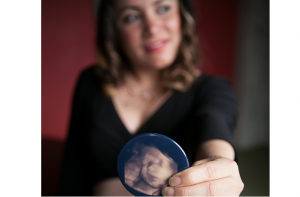 For the second time in the past three months, Option Line—a 24-7 pregnancy helpline operated by Heartbeat International—is celebrating a high-water mark, having reached 28,414 women with life-affirming help in the month of March.
For the second time in the past three months, Option Line—a 24-7 pregnancy helpline operated by Heartbeat International—is celebrating a high-water mark, having reached 28,414 women with life-affirming help in the month of March.
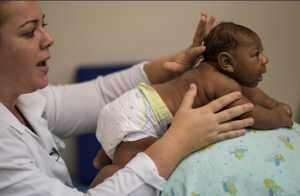 New evidence about the Zika virus and the potential link to defects in unborn babies came out this week.
New evidence about the Zika virus and the potential link to defects in unborn babies came out this week.
 BAKER CITY, Oregon, March 31, 2017 (LifeSiteNews) – Matt and Elsa Cunningham thought they’d lost their young son in a drowning accident earlier this month. But 22-month-old Matty made it through the terrible ordeal with no medical complications.
BAKER CITY, Oregon, March 31, 2017 (LifeSiteNews) – Matt and Elsa Cunningham thought they’d lost their young son in a drowning accident earlier this month. But 22-month-old Matty made it through the terrible ordeal with no medical complications.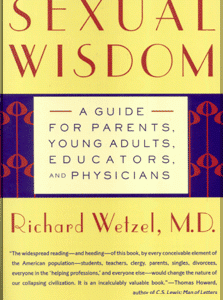
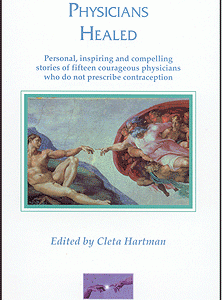

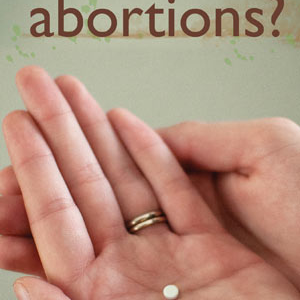

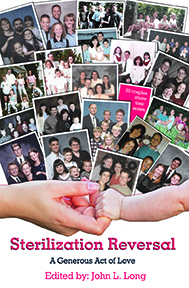

FDA Reports 10,000 Essure Injuries and 30 Deaths
The FDA received 5,016 medical device reports involving Essure in 2016, plus another 6,176 reports in 2015, and 30 reports of deaths. The deaths include four adult women, 18 pregnancy losses, two infants who died after they were born, and a possibly stillborn baby.
Many reports listed multiple side effects. The most common problems with Essure included:
Pain/abdominal pain (10,746)
Heavier menstrual bleeding or irregularities (5,377)
Headache (4,396)
Fatigue (3,560)
Weight changes (3,270)
Patient-device incompatibility, such as nickel allergy (2,402)
Pregnancy (1,113)
Migration of Essure (1,485)
Broken Essure (617)
Pregnancy losses, ectopic pregnancy, abortion, miscarriage (474)
Essure difficult to remove (304)
Malposition of Essure (261)
The FDA update also provides new details on an ongoing Essure safety study that will compare 1,400 women who are sterilized with Essure against 1,400 women who have a traditional “tube tying” sterilization.
So far, the study has not shown any new safety problems or an increased risk of problems since Essure was approved. The researchers are investigating side effects like chronic pain, abnormal uterine bleeding, allergic reactions, hypersensitivity to nickel in Essure, autoimmune diseases, follow-up surgery, pregnancy, and effectiveness.
However, other recent studies have already shown that women who choose Essure are 10-times more likely to need another surgery compared to women who have a laparoscopic tubal ligation.
Essure is a metal coil that is permanently implanted in a woman’s fallopian tubes, where it causes irritation and scar-tissue growth. Essure is supposed to block the fallopian tubes to prevent pregnancy. Instead, many women got pregnant or developed severe side effects.
In November 2016, the FDA added a “Black Box” warning label to Essure, which is the strongest label the FDA can require on a device. The FDA also created a checklist to better inform patients about the potential side effects.
The problem is that Essure is marketed as a 30-minute non-surgical outpatient procedure for busy women, with less pain and a faster recovery time than tubal ligation. Lawsuits have been filed by women who accuse manufacturers of downplaying risks and violating approval requirements to get Essure on the market without adequate safety studies.
Source: Reviewing Ongoing Clinical Study to Gather More Information on Essure Benefits and Risks
Posted in News & Commentary | No Comments »